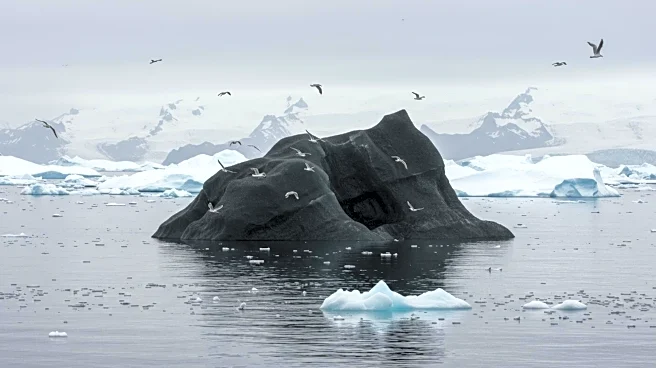What is the story about?
What's Happening?
A fisherman named Hallur Antoniussen discovered a black iceberg off the northeast coast of Canada, near Carbonear. This unusual iceberg, with its dark, obsidian-like surface, has intrigued scientists and sparked debates about its origins. Theories suggest the darkness may be due to accumulated sediments or volcanic ash trapped within the ice over millennia. Some researchers even consider extraterrestrial origins, such as meteorite dust. The iceberg's smooth surface and geometric precision suggest extreme compression over thousands of years.
Why It's Important?
The discovery of the black iceberg challenges existing knowledge about Arctic ice formations and could provide new insights into Earth's climate history. The iceberg's composition may reveal information about past geological events, such as volcanic eruptions or meteorite impacts. Understanding these formations can help scientists track changes in glacial dynamics and climate patterns, which are crucial for predicting future environmental shifts. The iceberg also highlights the need for rapid response protocols to study such phenomena before they disappear.
What's Next?
Scientists aim to locate and study similar formations to understand their origins and implications better. Establishing a monitoring network for unusual ice formations and developing advanced sampling techniques are priorities. Researchers are particularly interested in analyzing trapped atmospheric gases within the ice, which could provide insights into ancient climate conditions. International collaboration between Arctic research stations and maritime observers is essential for tracking and studying these rare ice formations.
AI Generated Content
Do you find this article useful?













